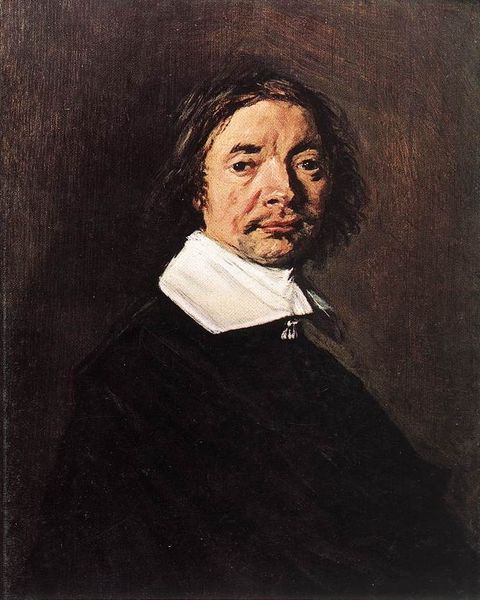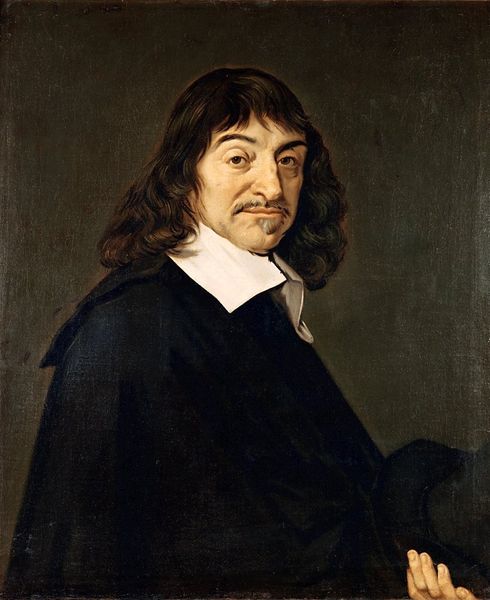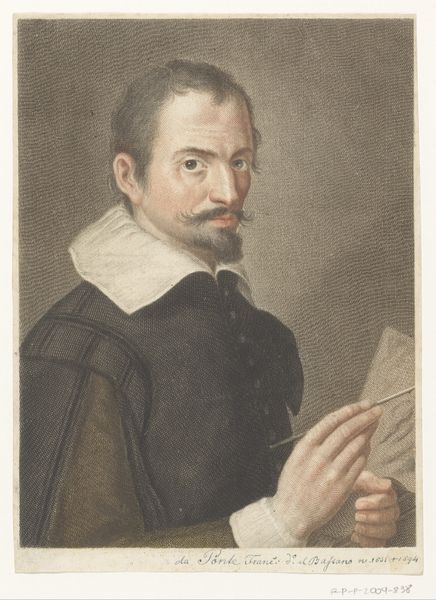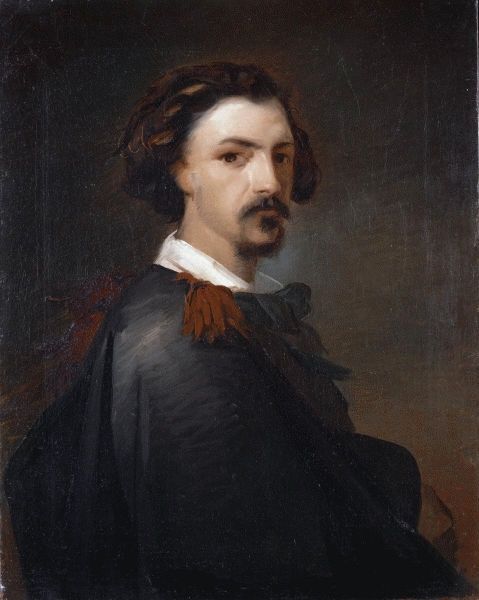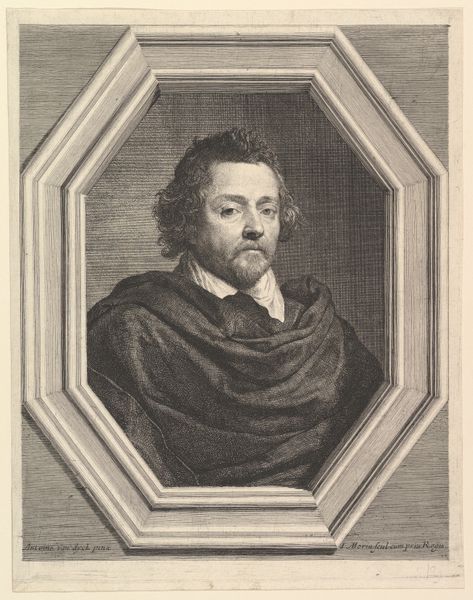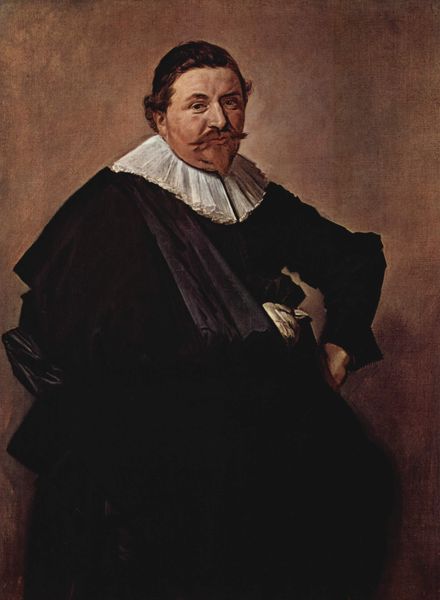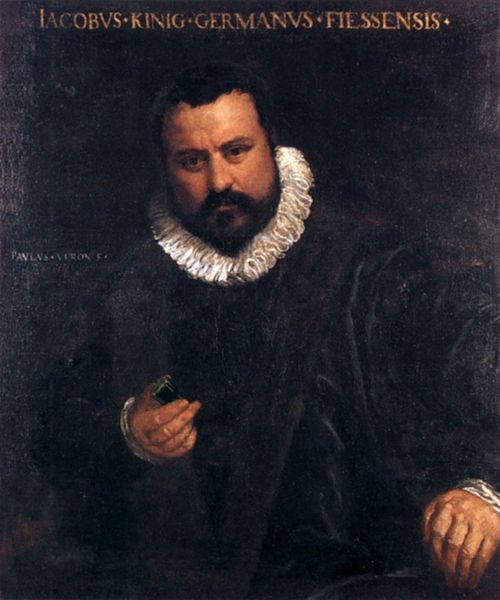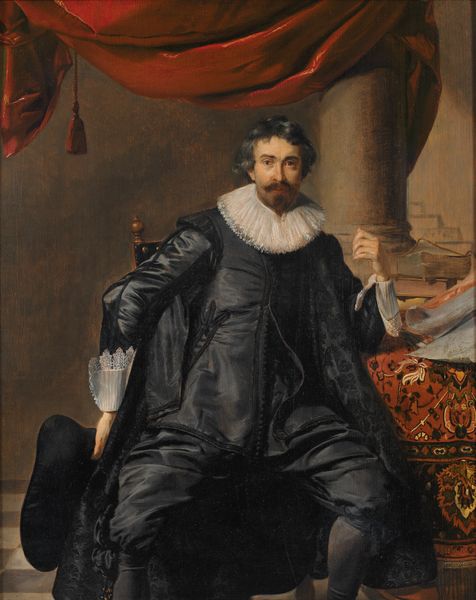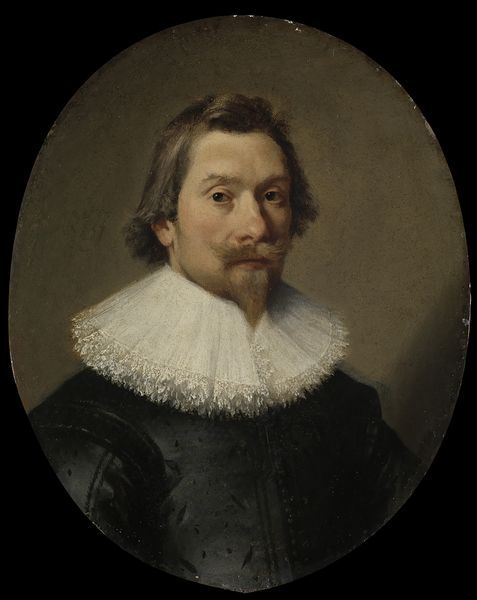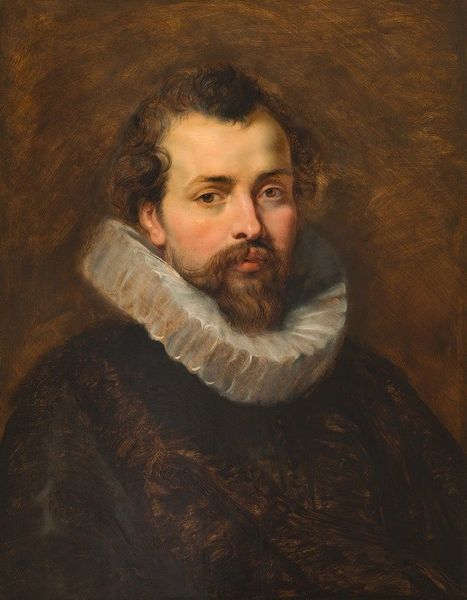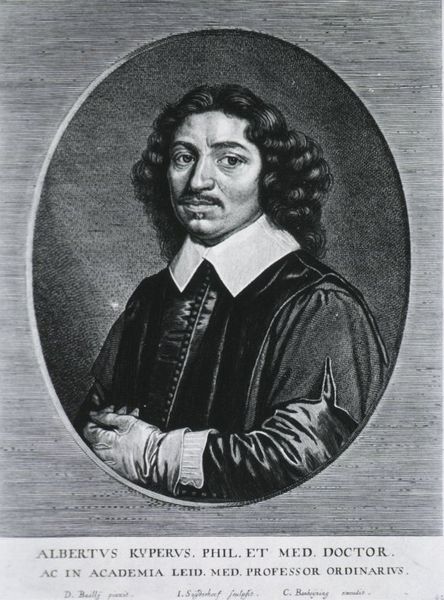
painting, oil-paint
#
portrait
#
baroque
#
painting
#
oil-paint
#
group-portraits
#
history-painting
#
realism
Copyright: Public domain
Editor: This is Frans Hals’s oil painting, “Johannes Hoornbeek,” from 1645. I find it striking how directly he’s looking at the viewer; it's a very present and engaging portrait. What kind of symbolism do you find embedded in this piece? Curator: That direct gaze is absolutely key. Consider the book in his hand, likely a religious text given Hoornbeek's theological profession. What might the deliberate presentation of this object, combined with his intense stare, signify? Hals presents us not just with a likeness, but with a declaration. Editor: So, it’s less about capturing his appearance, and more about projecting his convictions? Curator: Precisely. Think of the color palette—the somber blacks and whites. They create a sense of seriousness, purpose, a lack of frivolity, that underlines the sitter's dedication to his beliefs. And observe the detail in his face: Hals doesn't flatter, he records, emphasizing Hoornbeek's humanity, his earthly presence, despite the spiritual weight of the book. Editor: It's like he's saying, "Here I am, convictions and all." How much of that do you think is Hals inserting himself into the painting? Curator: A vital question! Hals certainly uses his signature brushwork to bring Hoornbeek to life, that's unavoidable, however, I believe Hals is keenly aware of his role here – to present Hoornbeek’s persona and the values he embodied. Editor: That makes the painting far more than just a portrait. It's a statement about faith and conviction. Curator: Exactly! It’s a potent reminder of the power of belief, rendered through Hals's compelling realism.
Comments
No comments
Be the first to comment and join the conversation on the ultimate creative platform.
